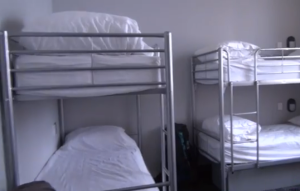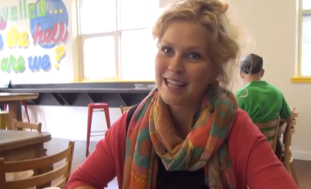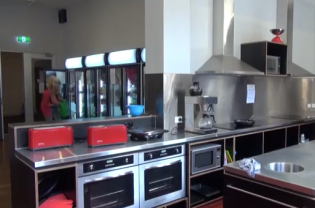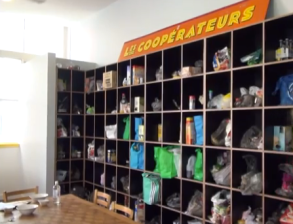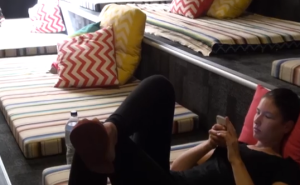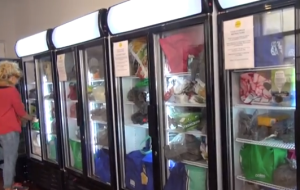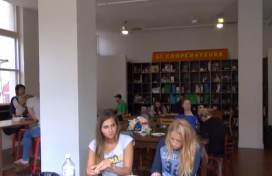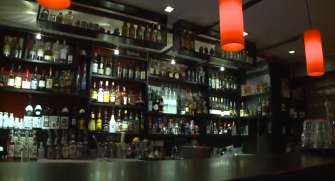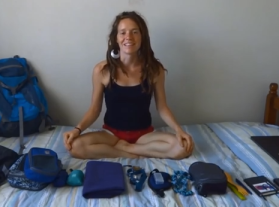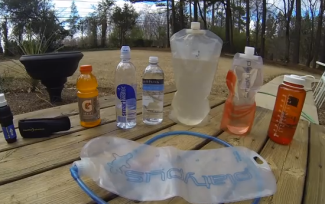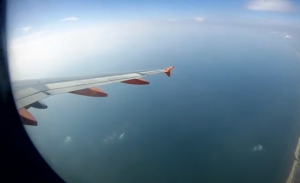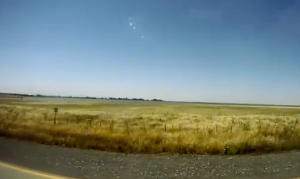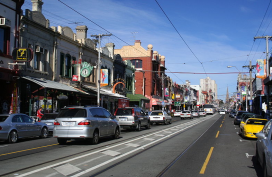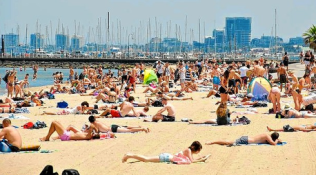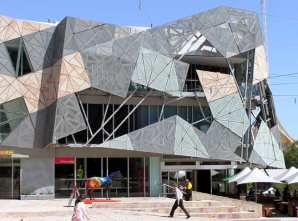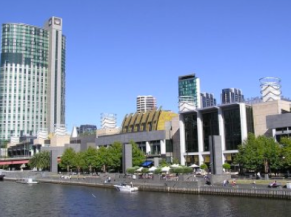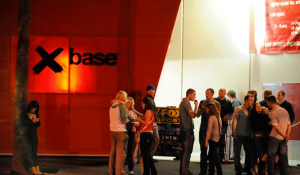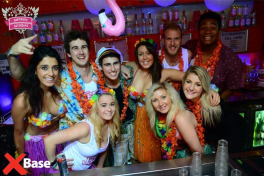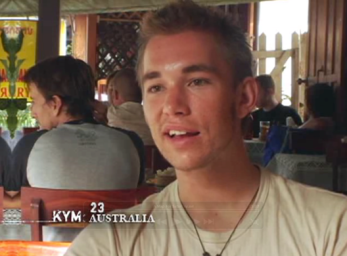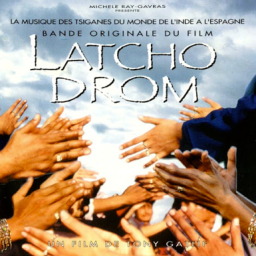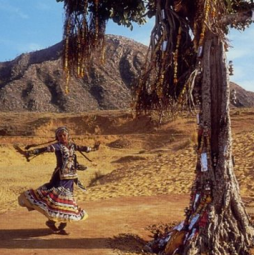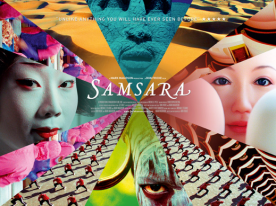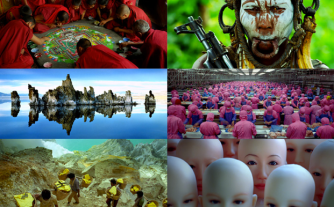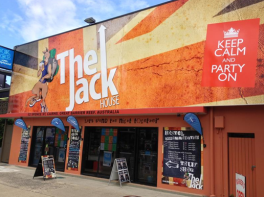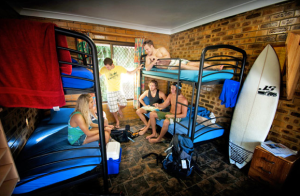INTRODUCTION
Thomas Hatchman
‘A Shapeless Existence’ is a very exciting project that has been developed over a number of weeks and throughout numerous production meetings. As a collaborative pair we have worked together to brainstorm ideas and come up with numerous concepts for our documentary film. When we first came together weren’t sure how we were going to execute our ideas and bring them to life, but after going through the criteria and breaking our project down into different sections, the possibilities became endless. Vatsal, had some fantastic ideas surrounding his experiences travelling upon his arrival to Melbourne, and I was intrigued to replicate a similar type of story for our film. Vatsal’s story was personal and engaging and had all the elements I was looking to for in a documentary film. After agreeing on a topic we began the development stage. Our film, ‘A Shapeless Existence’ is a documentary travel piece that deals with the hardships and challenges of the backpacking lifestyle. It looks at the ways in which people deal with their problems and the impact travelling has on people.
Once Vatsal and I had collaborated together, we began to research our concept to see what creative approach we were going to take. We met on numerous occasions to discuss a variety of films that we could potentially use as a foundation for our own. Throughout this period we found various films that we were interested in and explored each of them in detail. Some films included ‘A Map for Saturday’, ‘Samsara’ and ‘Latcho Drom’. These documentary films were a great way for us to collaborate and discuss the elements we liked and disliked. It also enabled us to look for ways we could implement similar techniques, devices and styles into our own.
After securing our concept, we began to work out the structure and overall theme of our documentary. The structure of our film will contain various interviews from our subjects who Vatsal will source. What we are aiming to do is showcase their lifestyles and previous travel experiences. Our tone and genre will compliment our film’s aesthetic qualities, bringing each subject to the pinnacle of their existence as we deconstruct them and open them up to our audience. We will try to extract the truths from our subjects and allow the audience to get to know our subjects on a personal level. We are hoping to capture footage from a number of culturally diverse subjects from all walks of life. This will give our audience some variety and keep the film moving in a number of new and interesting directions.
Vatsal Shah
Our project was developed as part of our RMIT University Film Course. The initial idea for our film was developed as part of a collaborative effort between Thomas, the other producer of this group, and myself. We began discussing this idea after I spoke to Thomas about the experiences I had had with some of my backpacking friends who I met during my travelling experiences last year, and throughout my stay here in Melbourne. Throughout the collaboration process, Thomas and I had numerous meetings and discussions and eventually presented our ideas to one another. We eventually agreed on our idea and started considering how we would like to make our documentary film.
As a group we wanted to focus our film on the backpackers themselves, showcasing their individual stories, the value of their travels and also their personal experiences. We hope to demonstrate the solitary journeys that people embark on during their times traveling and give our audience an insight into the intense environment of this type of lifestyle. This may involve presenting our audience with a first hand experience of the hardships and struggles backpackers face on a regular basis. This may also mean showcasing intricate details of particular individuals and what they have been through. We would also like to incorporate specific elements of Australian culture and why people decide to travel to Melbourne.
This is a TED TALK by Rick Steves on ‘The Value of Travel’. It was an inspiring presentation and video that I felt we could get some great ideas from.
We would also like to establish an emotional connection with our audience. We have discussed this idea on a number of occasions and want to showcase how travelling impacts people. This may include the filming specific individuals and capturing what it’s like living away from home for long periods of time. It may also mean filming moments of loneliness and isolation as these people are away from their families and some have been forced to live by themselves at a young age.
“To be personally honest, I believe we are all introverts in some way or another and I have many friends who are. They say travelling is not for everyone. They say it’s hard and society questions why people decide to live this way when one can live better, but that’s not the idea we are looking to tell our audience. We want to show travelling as the idea that you live life as it comes. Melbourne resides a number of backpackers from all over the world and we intend to meet some of these people and ask them about their experiences and the challenges and hardships they’ve come across throughout their lives”.
SYNOPSIS
Our film is primarily a travel documentary featuring current backpackers residing in Melbourne. The film focuses on a select group of individuals from around the world talking about their experiences in Melbourne and elsewhere. The film will focus on the hardships and challenges our subjects have faced throughout their lives. We also aim to focus on the lavish lifestyle of the travelling culture. Through interviews and the participation of various backpackers we aim to explore the ways in which various people adapt to this type of living. We also hope to invite and educate our audience about the positives and negatives of travelling.
SOCIAL SIGNIFICANCE
Backpacking originally started off as a small community, however it has grown significantly over time. It has contributed widely to Australia’s unique culture and created diversity amongst its people. In a broader context, backpacking has allowed many businesses to grow and develop, with many travellers filling jobs and contributing to our country’s economy. We believe that our film will represent Australia as an appealing tourist destination for backpackers and also help promote tourism in the country. We also feel that due to the nature of our films’ stories, our audience will be encouraged to travel themselves. We aim to teach our audience about the significance of travelling and also encourage our viewers to go out and experience different places and people.
MOTIVATION
The motivation for our film originated after several discussions about our own travel experiences. Travelling has always intrigued us both and is a topic that we are both interested in exploring. Being young, aspiring and creative individuals, we wanted to work with people who were mainly our own age and who had similar mindsets, desires and ambitions to our own. We felt backpacking was an intriguing way of life, and we were both interested in its culture. We also felt that our documentary film would be highly relatable because many people in society can relate to this type of experience. We also felt that due to our strong social media leads; we could easily source people for this project. This subject also gives us creative freedom to source content from a wide variety of people and places. It is also an opportunity for us to learn about different cultures, people and their lifestyles.
Vatsal Shah
Vatsal originally came across this idea after he met a number of backpackers residing in Melbourne who he happened to meet whilst working at a place called ‘Grill Steak Seafood’ in Melbourne. During his first few weeks in the job, he began to interact with his co-workers who were mainly backpackers. Vatsal became friends with his colleges going out drinking after work through which he got to know them better on a more personal level. What intrigued Vatsal most about these people was their free-spirited nature and way of life. Through getting to know them better overtime, Vatsal realised the impact that travelling can have on somebody. He was mostly interested by their lifestyle, and how they always seemed to have some type of interesting story to tell.
Vatsal’s main intention was to develop his experiences into a film. He wanted the film to be based around the sharing of his friends unique, different and exotic experiences during their times travelling. What he out found during this time was that travelling long term isn’t always as glamorous and as interesting as it may seem. He realised that travelling continuously to different countries and places is hard and often challenging for many people. The most difficult thing that he learnt from his friends was the notion of saying goodbye. Vatsal was intrigued by the heart-felt nature and kind spirited manner in which friends live each day. A few of his friends still work at the same place where he originally met them, whilst several others have since moved jobs or continued travelling.
Thomas Hatchman
Thomas was originally introduced to this topic via Vatsal’s proposal and through his own personal experiences. He was motivated to make this film into a documentary film due to its flexibility and creative potential. He was also interested in learning about new cultures, and the reasons behind why people travel. Thomas liked the idea of a sociability experiment and the thought of filming in different destinations. Thomas has travelled before and he is excited at the prospect of meeting new people and understanding more broadly why people choose Melbourne as a tourist destination.
STATEMENT OF DIRECTORIAL APPROACH
The overall style and genre of our film is a travel documentary. Our film is mostly expository with elements of the observational form of documentary. The film will feature these varying types of documentary modes. Firstly our film is expository because it is being narrated by our subjects and at times may also be narrated by an omnipresent narrator, which will speak over footage. We will use this method of narration to explain to our audience the topic we are exploring. Narration will be used in the first section of our film; it will introduce our film and its subjects. We will support our narration with visual information, which will include cutaways of various locations and backpacking hot spots. We will then go into our interviews, which will play simultaneously. What we aim to do through using narration is to persuade our viewers to reflect, learn and understand more about why people travel and the experiences and opportunities available to them. We will also have our subjects talk to our off screen interviewer about the struggles and hardships they have faced and also get them to talk about their reasons for travelling. Our job as the producers and directors of this film is to portray our subject’s feelings and emotions and showcase them to our audience.
This is an example of expository documentary, this is because this documentary has a narrator through out it whom emphasizes each aspect of the documentary.
Our film will also demonstrate elements of the observational mode. We will be going around to numerous locations to capture footage of the backpacking culture and way of life. This will mean capturing footage where the camera doesn’t show us (the filmmakers) on screen nor shows us having any involvement or participation in the events that unfold. We will be simply at times just observing the events as they unfold before us. We will do this during our recordings of cutaways and throughout our interactions with our subjects under social circumstances. Only during the actual staged interviews will we fully engage with the participants of our subject’s stories. During this time we may shoot some footage hand held as we are not planning on staging too much of what we shoot. This means we may have some shaky footage as the majority of footage may end up being unplanned. Unlike the rhetorical insistence of our expository elements we do hope to utilise the camera in a variety of ways. This will involve using the camera to its full potential with lots of movement in our shots. It will also mean that there will be some parts in our documentary where we will follow our subjects during social situations. This will give our audience a certain essence of our film as being partly observational but not entirely. In utilising both these modes of documentary we will do our best to set up our film and make it as engaging and as appealing as possible.
This is an example of a observational documentary as you never see the film maker as he/she is hidden behind the camera and has no participation in the events happening. Also sometimes the camera can be shakey or uneven as nothing is staged
We will interview each of our subjects at their accommodation (e.g. hostels, apartments etc.) and track their lives and progress over numerous days. We hope to interview our subjects under numerous circumstances (e.g. at work, home, with friends, family etc.) We think this would give our audience a glimpse of their personalities and a sense of character. Currently, would like our subjects to be as honest and real as possible. We aren’t sure how our interviews will go as reflecting on past experiences can be an emotional task and we understand and acknowledge this may be difficult content to obtain. We want to try and capture our subjects as they visit their more emotional and sensitive sides. We are hoping these emotions and experiences relate heavily with our audience. We want our audience to acknowledge that backpackers are human beings just like us and appreciate that their wants, needs and desires may be different from our own.
Backpacker Travel Film, Thailand, Komodo, Bali, Borneo Movie Video
What makes our documentary different to other travel documentaries is the story of our subjects, their experiences and journeys. The topic of our film will focus heavily on our subjects; they will essentially guide our audience to help tell the story. There have been several previous travel documentaries that have been done before and most of them have had some type of linear narrative structure that focuses on a group of individuals or travelling in general. We would like to make our film slightly more personal and creative by running stories parallel to one another and giving our audience more variety and perspective. Our subjects will mostly narrate the film as it allows for a deeper focus on the topic being addressed and also showcases the emotions of our subjects, their stories and the challenges they have faced.
Brian Gerisch & The Backpacker – Hostel Experience
We want our film to tell numerous stories about travelling and the impact the lifestyle can have on people. We will mainly focus on our subjects as the featured driving point of our narrative. The experiences and stories of our subjects will play a fundamental role in helping our audience understand the essence of what we are trying to convey. We believe the use of narrative in cinema is very important. As filmmakers we want incorporate the use of narrative into our work, because as an audience, people often have high expectations that they will be lead along some sort of journey or adventure, in which they play no part. We also acknowledge that most audiences will often make bold assumptions that there will be characters (subjects) and some type of action (turning point) that will involve them with another. As such audiences will also often assume that between such characters there will incidents and obstacles that will connect them in some way. Most audiences will frequently expect that the problems or conflicts arising in the course of the action (e.g. the stories of our subjects) will achieve some final state, either they will be resolved or, at least, a new light will be cast on them. We would like to incorporate these elements into our own film and really challenge our audience to think about what they are seeing and how it relates to them or to the other people within our film. What we would really like is for our subject’s stories to connect in some way and for people to be moved by the stories that are told by them.
VISUAL APPROACH
We want our film to be aesthetically pleasing. We will have a strong focus on the landscape of Melbourne, its beaches, hostels and nightlife. We will mostly shoot wide-angle shots, but we also aim to capture the smaller more intricate details of the city’s landscape. Cutaways will be used throughout the film. These shots will showcase the diverse culture of Melbourne as a city. The film will be mainly shot in Melbourne and its surrounding suburbs including St. Kilda, Southbank and Brunswick. It is these places that we intend to shoot the majority of our documentary. From a stylistic point of view, varying camera shots will be utilised. We will be capturing a series of montage sequences, which we will over lap with our subject’s narration as well as some of our own. As well as using montage sequences we will juxtapose this with the interviews of our participants. There will be no direct focus on any particular subject; each subject will have a fair chance to tell his or her story.
A Documentary on Backpacking Tips for Melbourne – We want to incorporate similar techniques with narration. Not so informative but more of a narrative style film. We like the cutaways and style of the shots.
Aesthetically, we want our film to suggest a sense of travel and momentum. It will be a fairly fast paced film so our camera shots will have lots of movement. This will mean panning shots, establishing shots and point of view shots as we try to capture the true nature of a day in the life of a backpacker.
United Backpackers Melbourne – A great example of a beautifully shot montage sequence.
As well as this, we will also include still mid-close ups of our subjects during their interviews. We will cut back and forth from the interviews to other footage that relates to the dialogue they are speaking as they tell their stories to the audience. As we do this, we hope our audience will be able to relate to our subjects in some way. As previously mentioned, we are focusing on the hardships and challenges our subjects have faced during their time travelling/or in their personal lives, and then showcasing how they have/or are dealing with these issues. This means the first section of our film will set up exposition, which leads us into the next stage of development, structure.
The structure of our film will start by introducing our subjects as mentioned. We will use still mid shots/close ups for our interviews as mentioned and cross cut this with other footage/cutaways that relate to our subject’s stories. This footage will include varying shots of our subjects as well as the landscape of Melbourne, beaches, nightlife etc. We are hoping to get some shots directly from our subjects in order to make our film more personal/relatable from our audience. This may include freeze frames of photos of their families, friends and lives back home. We will use this footage to help express our character’s stories, personal journeys and experiences. Once we have established exposition by introducing each member, we will interview him or her with a series of questions. These questions will directly concentrate on them as individuals and may also focus on their relationships with other travellers. They will be fairly personal questions and we want to capture the true essence of why they have decided to travel overseas. What are their motives, desires, morals and personal circumstances? These are the types of elements we want to capture from our subjects. We don’t want a surface level documentary. We want our film to have substance, tell our audience a story, and give them something they can relate to. This is why having a good structure is fundamental in making our film a success.
Our envisioned cinematography will reflect both the positive and negative aspects of travelling. In saying this, we will open our audience to a vast spread of different emotions from our subjects. As such, our individual characters will mainly be responsible for driving our documentary forward. In order to showcase each of our subject’s stories in the best possible way, varying cinematic techniques will be utilised. These types of techniques will involve managing components such as framing, lighting, set-up and shot selection. We want our film to demonstrate sophistication and clarity. In order to do this, each frame will need to be carefully organised. Framing is not simply just a ‘neutral border’ but more so a ‘vantage point’ onto which material is expressed though an image. The framing of our film will be especially important as it defines the image for the viewer. We must also make sure we consider the duration, composition, and photographic qualities that we express in each frame as this may also affect the tone and overall feel of our film. We are hoping to shoot ‘wide-screen’ shots using an anamorphic lens (Sigma 18-35mm 1.8). We would love to shoot with a custom camera in order to get a wide-screen cinema effect. We love how it looks on screen and it has the potential for significant visual effects. The screen becomes a band or strip, emphasizing horizontal compositions. It also looks amazing.
PRODUCER’ NOTES
Being the producers of this documentary, we hope to showcase this film and it’s subjects to our audience in the best way possible. There is no specific audience that we are aiming our film at but we are hoping young people from various cultures like ourselves, and people interested in travel will benefit the most. We have several ideas as to what/how we want shoot our film and what elements of our documentary we want to capture and illustrate to those watching. Despite our clear-minded vision of how our film will look, we are open/flexible to variable change, as it is the case with all documentary films.
So far we have managed to source our participants and briefly arrange times when they are available. Most of the interviews will be shot at the accommodation of our subjects as mentioned. Shooting at their places will not be an issue as we have spoken to the participants about the seeking permission to film them, their stories and the places they are staying. Sina and Pablo are staying in South Bank and Josh and Lilly are staying in the CBD area whilst Liam and Jade are residing at local backpackers in St. Kilda. Shooting and following our subjects at their work place will be tricky, as we still need to seek permission to do so for this part. The negotiation process is underway. We will hopefully be shooting in the above-mentioned suburbs to film our cutaways and montage sequences.
Vatsal is sourcing the participants and Tom will provide the camera equipment (GH4 Panasonic Camera). We have decided to shoot the interviews in the coming weeks and edit the footage as we go along. Using this form of filming and editing will give us more time to shoot and edit the documentary exactly as we have planned rather than filming everything at once and then having to work it all out in the editing room.
The subject matter is feasible at this point and there will not be many risks involved in shooting any of our footage or interviews. Keeping the equipment safe is always a concern though. We also want to ensure and provide a safe environment for our participants. If we need to relocate or something happens that may affect the safety or those we are filming we will do our best to ensure no one will be affected. Safety is a priority in any shoot, however it wont be too much of a concern as we are planning to shoot the bulk of our interviews at their accommodation. Portraying nightlife scenes will probably be our main concern as it could be tricky to shoot in these places due to the noise and large amounts of people. However, we have spoken to some clubs and local pub owners to allow us permission to shoot film and take some photos at their premises.
TIMELINE
As a group we have outlined briefly the steps we must take over the coming weeks and throughout the shoot if we are to accomplish everything we have set out to do.
Week 8 – Interviews with Sina, Pablo, Josh and Lilly. We will push the interviews with Liam and Jade to next week. We will shoot all the interviews with the above four participants, following them at work as well as during their weekends. We are hoping to edit the footage during that weekend (preferably sunday).
Week 9 – Interviews with Liam and Jade. Shoot cutaways and montage sequences. St. Kilda beach scenes, nightlife scenes with the participants, work interviews with Liam and Jade.
Week 10 – Postproduction and figure out what needs to be done next to finish the film. Reshoot whatever needs re-doing. Shoot more cutaways and montages to play around with. The film would officially be in editing process by this week.
Week 11 – Edit our film. Go through clips and source sound. Mix footage.
Australia is known for its beautiful landscapes and sceneries and the continent is famous for its growing backpacking culture. Our film documents stories of people from different parts of the world and their experiences in Australia and elsewhere, not forgetting the cinematic brilliance it would offer, it will appeal to and draw towards a large range of culturally diverse and interesting people.
APPROACH TO SOUND DESIGN
The approach for Sound Design for this documentary film will contain varying soundscapes, music and voice over narration. The sounds in this film will essentially affect the overall mood and feel of the film. This will influence people’s response to the film and affect people in varying ways. We want to make sure we have clarity and direction in the sounds that we choose. Sound is key to any film. Sound will be used in various forms in this documentary. Most of the sound will be recorded on location. Different atmospheric sounds will be used to enhance the quality of the visual images shown. Noises will include both interior and exterior soundscapes. Sound will include, the pouring of beer, traffic noises, people talking in cafés, restaurants etc.
We are planning to use one microphone (Rode Videomic Pro) however we might need to get another microphone just incase we plan to interview two people at the same time. We will be using ambient soundscapes and montage sequences with instrumental tracks that will convey varying emotions for our audience. The use of montage sequences whilst the participants are narrating their story will be a key feature in our film. The montages will in some way support the participant’s point of view and story. It will also add sophistication to our story as a collaborative piece. Sound will play a key role in allowing us to move our story forward. Different soundscapes will be used during the montage sequences, with the voiceover of the participants being the commanding voice. Different ambient sounds will be incorporated in the film when they are most needed. The sounds will be recorded at numerous locations and from public archives.
The use of narration over cutaway shots will also be used in this documentary. We believe it gives a different perspective to the story we are trying to tell. This will mean that some parts of the interviews from different participants will be used for narrating the story to our audience, along with other footage, which will be used as cutaways. The participant’s will be essentially be narrating the story rather than us recording dialogue in a studio. By doing so, the stories of our participants and the participants themselves will be more relatable and personal to our audience. Most of our sounds will be recorded if not they will be sourced from different copyright free public archives. There is no particular theme that we are planning on conveying/recording, but if need be, we will in-corporate one into our documentary if need be. The over all sound design will be light hearted and inspiring with piano instrumentals and string bass guitar. This type of music and some other tracks will be used in conjunction with the narration of our subjects.
CHARACTER PROFILES
We have selected a variety of different people to be a part of our documentary film. The first person we will be interviewing is Liam, a backpacker from England currently residing in Melbourne. He originally began his trip travelling through South East Asia, which include places such as Thailand, Indonesia and Bali. He eventually made his way down to Australia earlier this year. We wanted to put Liam in our film because of his free spirited and kind-hearted nature. After we met him on a few occasions we felt he would be a great candidate/interesting character to explore. What we found during this time was that to Liam, ‘nothing is more important than individual growth and exploration’. Liam’s future plans are to experience in finer detail, Melbourne’s diverse culture before deciding to travel elsewhere.
The second person we have chosen for our film is Sina, a young German girl who graduated high school in Germany before deciding to pursue travelling. After meeting Sina in person, she expressed to us that she doesn’t aspire to study for the time being and wants to take a break from her home country and way of life. Her main reasons for travelling were influenced by her desire to learn and understand more about the world she lives in and also to experience new places and people from all walks of life. We have chosen to include Sina in our film because she has experienced some personal challenges and difficulties back home and we want to capture a brief glimpse of her journey so far and showcase it to our audience. Sina was a fairly shy person before she started travelling and she has really learnt to open herself up to more people. Her confidence has grown significantly during this time. Sina currently resides in South Bank and lives with her housemates who are also backpackers. Australia is Sina’s first destination and she aspires to travel to many other places before she returns home to Germany. Sina’s main reasons for travelling overseas was to learn about new cultures and hopefully learn a second language as well. She plans to stay in Australia for little longer and then travel to New Zealand later next year.
Our third participants are Josh and Lilly from England. They are both very experienced travellers as well and would make for some interesting characters in our film. Josh is 20 years old and has recently just graduated from high school back home. Lilly is 24. She was studying psychology but decided to not continue, began travelling and currently works as a waitress here in Melbourne. Her desires are to pursue a career in the hospitality industry, a career that has led her around the world. Lily and Josh as mentioned, come from the south of England, and they have made stops throughout their journey to Australia. They have travelled to places like Germany, Thailand and Bali. They believe there’s still a lot to explore for them here in Australia, so they have decided to work for a little longer in order to save up some money before resuming travel again. They have also decided to go back to England next month to meet with their family and friends for Christmas as they have been travelling and working for over two years and would like to further explore Europe. They are hoping to visit places like France, Italy, Switzerland and Turkey.
The fourth participant in our film is Jude an American, originally from California who came to Melbourne to meet his Australian girlfriend who he met whilst travelling in Europe. He plans to stay in Melbourne for another six months and then hopefully go travelling again. He wants to do some more exploring of the Australian outback with his girlfriend. He believes travelling is an expensive habit, so he has decided to continue working in Melbourne in order save up more money. His travel plans for the future include places like New Zealand, Bali and Thailand. He eventually also wants to make his way up to India and Nepal. He believes every country makes him grow in some way or the other. He feels that travelling gives you a deeper appreciation of life. He also feels that travelling to places makes you a stronger and clearer minded person. After meeting Jude briefly, he mentioned that ‘we all need a certain motivation in life in order to get us going’. For Jude, travelling is the best way to do this. He believes that by meeting people from different cultures and from all walks of life, you become a better person.
Overall, we are very excited to be working with all these amazing people. We hope that they provide our film with a range of interesting and unique insights into the backpacking culture and lifestyle. What we have learnt so far is that all the people involved in our film have some reason as to why they are where they are today. Some people as we have found, are not interested in living a mundane western lifestyle; others want to explore the places this world has to offer and some people just want to have some good old-fashioned fun. In conclusion though, the point being, all these people will help drive our narrative and hopefully contribute to making our film something special. Through their stories and others, we hope to explore their hardships, challenges, the fun, the solitary lifestyle and the free spirited nature that dwell in all of us.
Note: (Character Portrait – We have got five participants as our main subjects/characters in varying locations. We will most likely meet other backpackers along the way who may also be interviewed and put into our film).
PROPOSED SEQUENCES
The film’s structure will have varying sequences. The basic structure of our film will be divided into three separate sections. The first section of our film will involve introducing our participants, their stories and how they ended up in Australia. Secondly, we will try and explore some of the hardships and challenges they have faced along the way. We want to find out what they were doing before they arrived in Australia and what their plans are for the future. We are aiming to shoot our documentary by beginning with these interviews. All visual information that surrounds our subject’s stories can be obtained after these interviews have been completed/shot as they are the most important part. The interviews are the driving point of our narrative and will be run simultaneously to one another rather than one after the other. This will keep the audience’s focus moving and allow them to learn and understand more content in a shorter period of time. After this footage has been collected we intend to shoot a second day of filming by collecting footage of our subjects living their everyday life (e.g. socialising, going out, daily routine life and other activities). We will then move onto shooting more aesthetically based landscape shots of the Melbourne backdrop.
During this time we also want to get some cutaway shots that draw links to the stories of our subjects, their experiences and journeys so far in Australia. We want our audience to feel as though they can connect and relate to our subjects in some way. We are hoping to shoot over two or three days, even more if required. We want to allow plenty of time for post-production so this means getting the majority of our footage in one week so we can begin editing as soon as possible. The editing process will depend entirely on the footage we collect and get from the stories narrated by our subjects. We really like the idea of filming the unknown. This means filming with the anticipation of not knowing what’s going to happen next. This is similar to the life of a backpacker, they never know where or what step they will take next. We want to capture this idea/element on camera. The process of creating this documentary is somewhat metaphoric to the lifestyles of our subjects as we are going with a ‘gorilla style’ of filming. We want to capture whatever comes our way, using hand-held camera work reflecting the true beauty of the documentary form.
AUDIENCE STATEMENT
Our documentary film is aimed mainly towards young backpackers currently travelling around Melbourne from other countries. Our film is mainly for the younger audience, and for people who have a desire and interest in travelling and different cultures. The film is directed towards varying audiences of different ages, genders and social classes. This may include culturally diverse people who have either travelled previously or have a desire to travel in the future. We are hoping that the film connects especially with the younger generation (backpackers or not), meaning people aged between 18 – 25 years old. We want our film to encourage people to travel and to experience what the world has to offer. We would also like to emphasise the idea of travelling an opportunity for personal growth and development, a journey of self-discovery and realisation.
We also feel that as a group there is this misconception amongst society about backpackers being seen as irresponsible. We would like to shatter this notion by demonstrating to our audience that these people should not be marginalised by society, and that they are no different to ourselves. We want people to feel as though they can relate to our subjects and their stories. By doing this type of documentary, audiences will be able to relate more clearly to our subjects as they are culturally diverse people with many stories to tell. This will make reaching a broader audience more accessible. As mentioned, this will make our film different to others, and full of interesting and engaging material as we un-pack our subjects and learn more about the true nature travel and its impact on people. We will use our subject’s stories and our own passion for filmmaking to drive the film forward. We also believe that if the audience can truly understand where our film is coming from, and can also relate their own experiences in sync with our subjects, we will achieve what we had intended to do.
CONFLICT
Travelling can be very lonely and solitary at times especially if you are travelling for long-term periods of time. Our film deals with the hardships and challenges of the backpacker lifestyle. We want to focus specifically on the challenges that our subjects have faced during their times travelling overseas and in Australia. We would also like to focus on the difficulties a backpacker faces when he enters a new region where the culture and language is different to their own. Communication is a fundamental difficulty for some people during travel, as well as being unfamiliar with the area and or region they are visiting. Trying to learn a native language provides an ongoing conflict for some people. We would also like to focus on the numerous internal conflicts amongst our characters that have led them to the decision to travel overseas. Our film will shed light on these conflicts and focus on how our participants deal with them.
LOCATIONS
Melbourne is a fantastic location for our documentary film. It is highly developed with some beautiful suburbs such as South Bank, Fitzroy and Brunswick, not forgetting the beautiful architecture and cityscape these places boast. These types of places perfectly resonate with the atmosphere of a backpacker lifestyle, a place secluded and private yet globally connected. Australia is known for its beautiful seacoasts, mesmerizing skies and inner city landscapes which will be perfect for our cutaway material.
The city’s beautiful landscapes, sunrises and sunsets, which can be seen from different locations such as St. Kilda, South Bank, Docklands and parts of the CBD are an element we would love to showcase as the main attraction of our film. We would really love to present our audience with a well-rounded feel of Melbourne as a city and tourist destination. Melbourne’s Central Business District has a number of great venues for backpackers and we would like to include some of these places in our film. We aim to shoot some footage in a few different venues to give our audience an understanding of the types of places Melbourne offers where backpackers can socialise with people from other cultures. Some of these venues will include some well-known local nightclubs (e.g. Xbase), which we will seek permission to shoot in. We will just need permission and release forms.
After meeting our participants we found that a number of them work at these types of venues so we will be able to source and shoot them fairly easily. We are hoping to take our camera into these places and follow our subjects at work, showcasing their life here in Melbourne. As mentioned, the main part of the interviews will be shot at our subject’s hostels and apartments, as this would be easier for us and also make our participants feel more comfortable. Most of our subjects are currently residing in St. Kilda, Southbank, Brunswick and Fitzroy as mentioned. We feel that these are all good accessible locations for interviewing our participants. Most of our interviews will be shot indoors but also outdoors as well. We want a mixture of creative footage, which will be cut and edited appropriately, to help our subject’s tell their stories.
XBASE – Hostel/Nightclub – A popular tourist destination for backpackers in Melbourne. It is located in St.Kilda just off Acland St. It is close to St.Kilda Beach. We will be shooting at this location and in this area.

